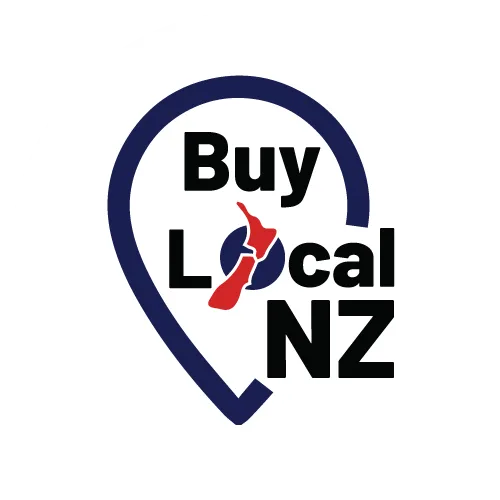
Segment Local Customers For Targeted Email Marketing Success
You'll boost your email marketing success when you segment local customers into targeted groups based on demographics, buying patterns, and neighbourhood behaviours. Start by analysing purchase history, tracking seasonal preferences, and mapping geographic zones to understand customer clusters. Combine this data with lifestyle indicators and event participation to create personalised campaigns. Understanding your distinct customer segments will reveal the pathway to higher engagement rates and ROI.
Key Points
Analyse customer demographics, including age, income, and lifestyle patterns to create targeted email segments based on shared characteristics.
Track purchase histories and buying patterns to personalise email content and timing according to customer preferences.
Segment customers by neighbourhood zones using postal codes to deliver location-specific promotions and community-relevant messaging.
Create seasonal and event-based segments to align email campaigns with local community happenings and holiday shopping patterns.
Monitor engagement metrics across segments, targeting 25% open rates for new customers and 15% conversion for regulars.
Understanding Your Local Customer Base Demographics
Demographics are the foundation of effective local email marketing segmentation. To truly understand your local customer base, gather key data points like age, income, education, occupation, and family status.
Break free from generic marketing by mapping your customers' residential patterns and identifying neighbourhood-specific trends.
Map where your customers live and analyse neighbourhood patterns to create marketing that speaks to local communities, not faceless masses.
Don't limit yourself to basic stats - dive deeper into lifestyle indicators that shape purchasing decisions. Track how your customers commute, where they shop, and what community activities they participate in.
Transform this demographic intelligence into actionable segments by identifying distinct groups with shared characteristics and behaviours.
Armed with this demographic knowledge, you'll liberate your marketing from one-size-fits-all approaches and create email campaigns that resonate with each unique segment of your local market.
Geographic Targeting Strategies for Neighbourhood Marketing
Building on your demographic insights, effective geographic targeting lets you zoom in on specific neighbourhoods and areas where your ideal customers live and work. Break down your local market into distinct zones based on postal codes, street boundaries, or natural geographic markers to create hyper-targeted campaigns.
Leverage mapping tools to identify customer clusters and analyse travel patterns to your business location. You'll discover which neighbourhoods yield the highest engagement rates and purchase frequencies.
Don't limit yourself to residential areas - include business districts where your customers work or shop.
Create custom content that references local landmarks, events, and community specifics. This neighbourhood-focused approach helps you craft messages that resonate with locals, making your emails feel more personal and relevant to their daily lives.
Customer Purchase History and Buying Patterns
Every successful email campaign starts with understanding your customers' buying behaviours. By analysing their purchase history, you'll discover patterns that reveal when they buy, what products they prefer, and their average spending habits.
Track key metrics like frequency of purchases, seasonal preferences, and price sensitivity to craft messages that resonate.
Don't just focus on what they've bought - pay attention to browse patterns, abandoned carts, and wish lists. These insights help you predict future needs and time your offers perfectly.
Break free from generic messaging by leveraging this data to create dynamic content that speaks directly to their interests.
When you match their buying rhythm with personalised recommendations and timely reminders, you'll boost engagement and transform casual shoppers into loyal customers who can't wait to hear from you.
Identifying Lifestyle Segments in Your Community
While purchase history reveals what customers buy, understanding their lifestyle choices shows you why they make those decisions. Look beyond transactions to discover how your local customers spend their time, what they value, and which social causes they support.
Map your community's distinct lifestyle segments by researching local demographics, attending community events, and monitoring social media conversations. You'll find groups like health-conscious professionals, eco-friendly families, or tech-savvy entrepreneurs.
Each segment has unique priorities and pain points that influence their purchasing decisions.
Connect these lifestyle insights to your email marketing by crafting messages that resonate with each segment's values. When you understand that some customers prioritise sustainability while others focus on convenience, you can tailor your communications to speak directly to their motivations.
Creating Custom Email Lists Based on Customer Behaviour
Once you've identified your local customer segments, it's time to organise your email lists based on how people actually interact with your business. Track key behaviours like purchase frequency, average order value, and preferred product categories to create targeted groups.
Break down your lists by engagement levels - separating your frequent buyers from occasional shoppers and browse-only subscribers. Pay special attention to customers who've recently made their first purchase, as they're prime candidates for relationship building.
Don't forget to monitor digital interactions. Note who clicks on specific product links, opens promotional emails, or abandons their shopping carts.
These behaviour patterns reveal valuable insights about customer interests and buying intentions, allowing you to craft messages that resonate with each group's unique preferences and habits.
Personalisation Techniques for Local Audience Engagement
Personalisation goes far beyond just adding a customer's name to your email subject line.
You'll want to tap into local insights that resonate with your community's unique identity and values. Reference nearby landmarks, upcoming local events, or neighbourhood-specific challenges in your email content.
Consider mentioning the local high school's football victory or the new café opening downtown. You can also segment your messages based on which side of town your customers live in or their preferred local store location.
Create location-specific offers that reflect your customers' daily routines. If you know they frequent your downtown location during lunch hours, send them special mid-day promotions.
Track local weather patterns and send timely, relevant offers - like promoting ice cream on hot days or umbrellas before forecasted rain.
Seasonal and Event-Based Customer Segmentation
Three key seasonal factors drive effective customer segmentation for local email marketing: holidays, community events, and weather-related shopping patterns.
Take control of your email targeting by dividing your local customer base according to their seasonal behaviours and event participation. You'll boost engagement by connecting with customers when they're most likely to act.
SeasonEvents to TargetCustomer BehavioursSpringEaster, Mother's DayGarden, Spring CleaningSummerJuly 4th, Local FestivalsOutdoor Activities, TravelAutumnBack-to-School, HalloweenSchool Supplies, Autumn DecorWinterChristmas, New Year'sGift Shopping, Indoor Activities
Track your customers' past seasonal purchasing patterns and event attendance. By aligning your email campaigns with these natural rhythms, you'll create more relevant, timely offers that resonate with your local audience.
Loyalty Program Data for Enhanced Targeting
You'll gain valuable insights into your customers' buying habits by tracking their purchase patterns through your loyalty program data.
By identifying which rewards your loyalty members prefer, you can tailor email offers that align with their demonstrated interests and values.
Analysing how customers redeem their rewards reveals timing preferences and price sensitivity, allowing you to optimise future email campaign scheduling and promotional strategies.
Track Purchase Patterns
By analysing your customers' loyalty program data, you'll uncover valuable insights about their purchase patterns and shopping behaviours. Track when customers make their purchases, what combinations of products they buy, and how frequently they return to your store. This intelligence helps you break free from generic marketing approaches.
Transform these patterns into powerful segmentation strategies. Notice which customers shop during sales versus those who buy at full price. Identify seasonal shoppers versus year-round patrons. Pay attention to basket size, product categories, and price point preferences.
Use this data to create highly targeted email campaigns that resonate with each segment's unique buying habits. Break away from one-size-fits-all messaging by aligning your email content with actual customer behaviours, leading to more authentic and effective communications.
Identify Reward Preferences
Since customers respond differently to various incentives, analysing their reward preferences through loyalty program data reveals opportunities for personalised engagement.
Track which rewards your local customers consistently choose and redeem to understand their core motivations.
Look for patterns in how customers use their points - some prefer instant discounts while others save for bigger rewards. Notice if they gravitate toward free products, exclusive experiences, or cashback options.
Examine seasonal trends in reward redemption to time your offers strategically.
Use this intelligence to craft targeted email campaigns featuring the specific rewards each segment values most. When you align offers with proven preferences, you'll boost engagement rates and strengthen customer relationships.
Consider surveying customers directly about which rewards matter most to refine your segmentation further.
Analyse Redemption Behaviours
Redemption patterns tell a deeper story about your local customers' buying habits and decision-making processes. By tracking how and when they use rewards, you'll reveal powerful insights to drive engagement and optimise your email campaigns.
Behaviour TypeCustomer SignalAction RequiredQuick RedeemersValues immediate gratificationSend time-sensitive offersPoint HoardersSaving for bigger rewardsHighlight premium redemption optionsSeasonal SpendersActive during specific timesPlan targeted seasonal campaignsSporadic UsersNeed motivation to engageSend re-engagement reminders
Break free from one-size-fits-all approaches by leveraging these redemption patterns. You'll empower customers to engage on their terms while maximising program ROI. Transform raw redemption data into meaningful segments that resonate with your local audience's natural buying rhythms.
Mobile Vs Desktop Email Response Analysis
You'll want to examine how your local customers interact with email across their devices, as mobile opens now dominate at 60% of all email engagement.
Desktop viewers typically show higher conversion rates, spending 26% more time reading messages and clicking through 15% more frequently than mobile users.
Understanding these device-specific behaviours helps you optimise send times and content formats for maximum impact.
Device Usage Trends
When analysing local customer behaviour, understanding device usage patterns reveals critical insights for email marketing success.
You'll discover that most customers now check emails primarily on smartphones during morning commutes and lunch breaks, while desktop usage peaks during standard work hours.
Track how your audience shifts between devices throughout the day to optimise send times and content formatting.
You'll notice younger demographics heavily favour mobile devices, often checking emails multiple times per hour, while older customers tend to prefer traditional desktop viewing during set times.
Break free from outdated single-device marketing approaches by embracing responsive design that adapts seamlessly across all platforms.
This flexibility guarantees your message resonates whether it's viewed on a phone during a coffee break or on a desktop during focused work time.
Conversion Rate Differences
Mobile and desktop users exhibit distinctly different conversion patterns, with desktop viewers generally converting at rates 25-40% higher than their mobile counterparts.
You'll find desktop users spending more time reading email content and clicking through multiple pages before making purchase decisions. They're also more likely to complete complex forms and transactions.
Break free from one-size-fits-all email approaches by crafting device-specific campaigns.
When targeting mobile users, focus on quick-action buttons, simplified checkout processes, and concise messaging that drives immediate response.
For desktop audiences, leverage detailed product comparisons, in-depth content, and multi-step conversion funnels.
Track your conversion metrics separately by device type to optimise each channel's performance and reveal higher response rates across your entire customer base.
Measuring Success Metrics by Customer Segment
After segmenting your local customers into distinct groups, tracking specific success metrics for each segment becomes essential for optimising your email marketing efforts. Break free from one-size-fits-all measurement approaches by analysing each segment's unique performance indicators.
Segment TypeKey MetricsTarget GoalsNew LocalsOpen Rate, Click Rate25%, 10%Regular CustomersConversion Rate, ROI15%, 300%VIP MembersLifetime Value, Referrals$2000, 5/year
Monitor these metrics to reveal your campaigns' true potential. When you track segment-specific performance, you'll identify which groups respond best to different content types, sending times, and offers. This data-driven approach empowers you to refine your strategies and deliver more relevant, impactful email marketing that resonates with each distinct customer group.

